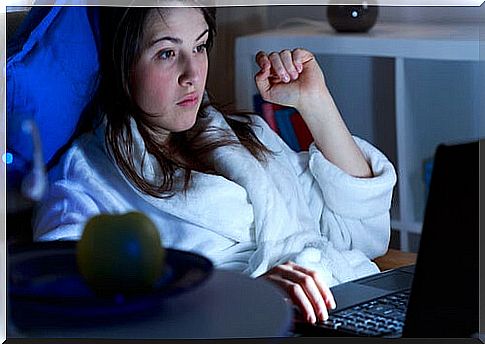Digital Obesity, Is There A Diet To Combat It?

Do you remember the first tablet or smartphone that went on the market? And the appearance of the Internet, do you remember? Who would have thought that we could be connected from anywhere in the world to the point of, some of us, being able to stuff ourselves with so much technology that it would make us consider digital obesity.
Technology has reached our homes in a massive way, almost without realizing it. It has arrived so fast that it has not even allowed us to digest it. Many people have not yet had time to learn how to manage it. The technological revolution has taken many of us by surprise.
Although the unstoppable advance of new technologies is benefiting society in many aspects, it is also producing certain problems that can put the physical and mental health of the people who use them at risk. We speak of dependency or change in the relational form: now we have more relationships, but of less quality.

What does the term digital obesity refer to?
Digital obesity refers to the abuse of technologies due to their overuse, with absolute connectivity. A phenomenon that can lead to dependence and overweight, affecting private life and thus reducing social and family relationships and work performance, with the appearance of isolation, anxiety, insomnia, endocrine, musculoskeletal and / or cardiovascular disorders.
The term digital obesity was coined by Daniel Sieberg, Google’s executive director of institutional relations. This specialist knows, from his own experience, what it is like to be shipwrecked in the world of new technologies. Thus, so that others do not repeat his story, he points out the need for adequate digital education.
With his book Digital Diet , he wants us to stop consuming excessive doses of technology to avoid digital overweight ; thus he proposes to us to evaluate our level of digital overweight to detect the problem by means of simple questions. Examples of them would be:
- How many screens do we have in our home?
- How often do we check social media per day?
- Do we use them during meals?
- What opinion do our partner or family have about it?
What does the World Health Organization say about digital obesity?
According to the World Health Organization (WHO) 25% of people have conduct disorders related to the use of new technologies. Some red flags that indicate dependence on new technologies are:
- Sleep deprived to stay connected for longer.
- Neglecting activities, such as family, study or social relationships.
- Receive complaints from someone close (family, partner) regarding inappropriate use.
- Irritability when the connection fails or is very slow.
- Lying about the real time that is spent on the different screens.
- Trying to limit exposure times without success.
In short, dependence is already installed when there is excessive use with loss of control, when withdrawal symptoms appear due to the impossibility of access and when there are negative repercussions in daily life, reducing physical activity, leisure, interpersonal relationships, with harmful consequences they have on health.
Adolescents are a risk group for addiction to new technologies, as they seek new sensations and are very familiar with them. For this reason, family education plays a very important role for proper use.

What diet can we do against digital obesity?
Digital obesity is an educational problem. They have not given us enough guidelines for us to know how to relate to so much technology. However, we can follow some rules to help us:
- Do not use mobile meals, video games … to avoid distractions and take advantage of this time for family communication.
- Promote healthy leisure through reading, movies, crafts, cultural activities …
- Encourage sports and outdoor team activities, which improve interpersonal relationships.
- Encourage the use of healthier games and applications that involve movement and reduce sedentary lifestyle.
- Limit the time of use.
- It is preferable to place the computer, television, video consoles in common spaces and not in rooms, thus facilitating family interaction.
- Keep mobile phones as far away as possible when we go to sleep, to avoid them being the last thing we see when we go to bed and the first thing we see when we get up.
Ultimately, we have to learn to disconnect. Leaving aside the external brain, as some experts call the infinity of electronic devices to which we are connected, to connect with our internal brain, with ourselves. And in case of detecting addiction, it is necessary to refer the case to expert professionals to solve it.









